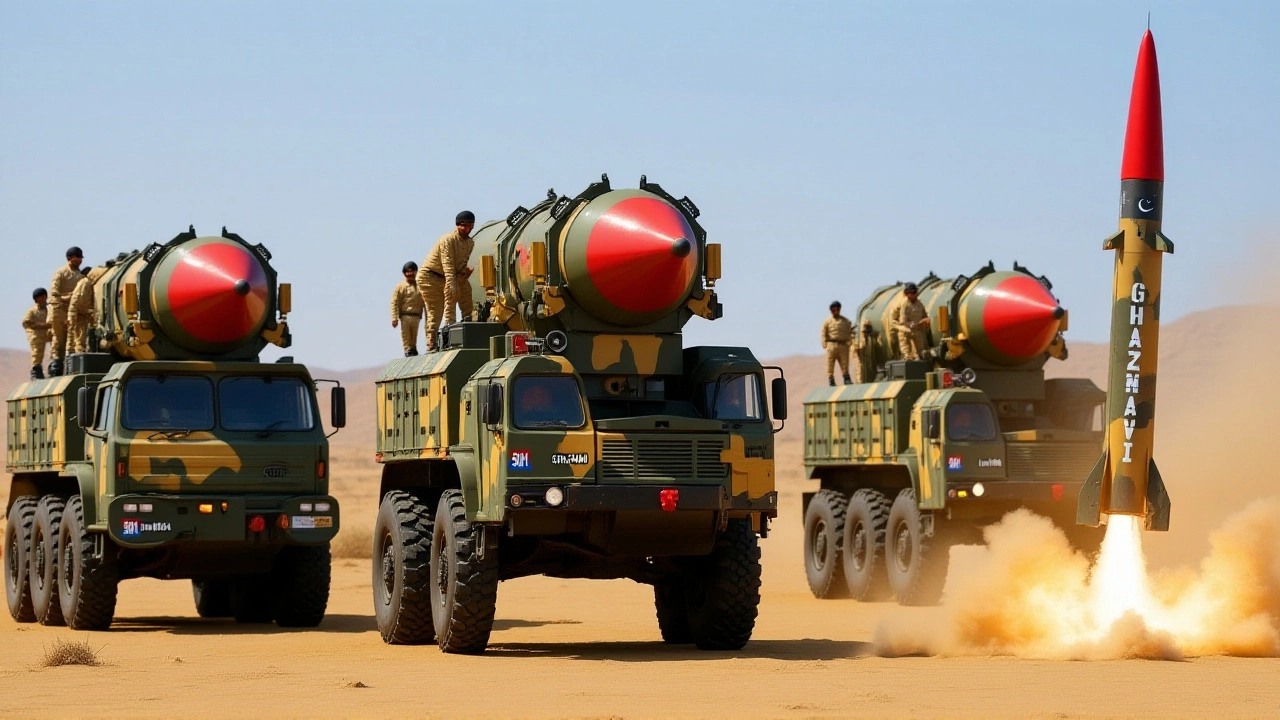On May 9, 2025, Army Rocket Force Command (ARFC) of Pakistan launched a series of ballistic missile strikes targeting Indian military installations across Punjab, Rajasthan, and Jammu-Kashmir. The attacks, using Fateh-1 and Fateh-2 missiles, were intercepted by Indian air defense systems—leaving no damage on Indian soil. But the message was clear: Pakistan is no longer just reacting to Indian strikes. It’s preparing for the next war.
Why Now? The Chain of Escalation
The trigger was the April 22, 2025, terrorist attack in Pahalgam, Jammu-Kashmir, which killed 26 civilians. India responded on May 7 with Operation Sindhoor-1, , destroying nine terror sites linked to Jaish-e-Mohammed and Lashkar-e-Taiba inside Pakistan-occupied Kashmir (PoK) and western Pakistan. The strikes were precise. They hit training camps, weapons depots, and command centers—without triggering a full-scale retaliation.That changed on the night of May 7–8. Pakistan fired drones and short-range missiles at 15 Indian cities. Then came May 9: a coordinated barrage of Fateh-1 missiles aimed at airbases and radar installations in Punjab and Rajasthan. Indian defense systems intercepted every one. But the real shock came later that night—when Pakistan launched Fateh-2 missiles toward Sirsa in Haryana. Locals reported debris falling near a church. Security teams recovered fragments. It wasn’t just a test. It was a warning.
The Fateh Arsenal: More Than Just Missiles
The Fateh-1 is a short-range ballistic missile with a 150-km range, capable of carrying conventional warheads. Its upgraded version, Fateh-2, stretches to 400 km—putting Delhi, Chandigarh, and even parts of Uttar Pradesh within striking distance. But Pakistan’s newest addition, the Fateh-IV, is the real game-changer: a land-attack cruise missile with a 750-km range, Mach 0.7 speed, and a 330-kilogram warhead. It flies low, evades radar, and hits within 5 meters of its target.These aren’t just weapons. They’re tools of a new doctrine. For years, Pakistan’s missile force was dominated by nuclear-capable systems like Ghauri and Shaheen—designed to deter, not to strike. But now, with the creation of the Army Rocket Force Command (ARFC) in early 2025, Pakistan is building a conventional missile force that can operate independently of its nuclear command chain. Analysts say this is a direct response to India’s growing precision-strike capability.

India’s Counterstrike: Precision Over Power
India didn’t wait. On May 10, it launched retaliatory strikes using BrahMos and Scalp cruise missiles. Targets: air defense systems near Rawalpindi. According to Indian military sources, the strikes crippled Pakistan’s integrated air defense network. Pakistani officials confirmed 31 civilian deaths and 46 wounded—among them, family members of Masood Azhar, the leader of Jaish-e-Mohammed. He claimed ten relatives died, including five children.But here’s the twist: Pakistan claimed it shot down 12 Indian drones. No evidence. No debris. No satellite imagery. The world saw only Indian precision—and Pakistan’s inability to respond in kind.
The Analyst’s Warning: A New Kind of War
“Pakistan’s ARFC isn’t about defense,” says Ali Mustafa, a defense analyst at the Islamabad Strategic Institute. “It’s about first-strike capability. If Operation Sindhoor-1 happens again, Pakistan won’t wait for India to strike first. It will open the war with Fateh missiles—not just at the border, but deep inside India’s industrial and military heartland.”That’s the fear. India has spent years building missile defense systems like Prithvi Air Defense (PAD) and Advanced Air Defense (AAD). But those were designed for a few incoming warheads—not a saturation attack of 50+ missiles in under 90 minutes. If Pakistan deploys Fateh-IVs and Babur cruise missiles together, India’s defenses could be overwhelmed. And once nuclear-capable systems are pulled into the fray, there’s no going back.

What’s Next? The Clock Is Ticking
India is accelerating its own conventional missile programs. The Agni-VI, with a 7,000-km range, is nearing deployment. The BrahMos-II hypersonic missile—capable of Mach 7—could be ready by 2027. Meanwhile, Pakistan is reportedly testing new solid-fuel launchers that reduce preparation time from hours to minutes.Both sides are now in a dangerous game of escalation. The last time this happened—in 2019, after the Pulwama attack—war was narrowly avoided. This time, the stakes are higher. The weapons are deadlier. And the command structures are more fragmented.
One thing is certain: the era of limited conventional strikes is over. The next conflict won’t begin with a skirmish at the Line of Control. It will begin with a missile streaking through the night sky—and no one will be able to say they didn’t see it coming.
Frequently Asked Questions
How did Pakistan’s ARFC change its military strategy?
Before ARFC, Pakistan’s missile forces were tightly controlled under nuclear command, limiting conventional use. ARFC, formed in early 2025, gives the army independent authority to deploy Fateh and Babur missiles for conventional strikes—bypassing nuclear protocols. This allows faster, more flexible responses to Indian surgical strikes without immediately escalating to nuclear threats.
Why are Fateh missiles more dangerous than older Pakistani systems?
Unlike older Ghauri or Shaheen missiles designed for nuclear deterrence, Fateh missiles are precision-guided, conventional, and optimized for rapid strikes. The Fateh-IV’s low-altitude flight, 750-km range, and 5-meter accuracy make it nearly impossible to intercept with existing Indian air defenses—especially if launched in swarms.
What role did the April 22 Pahalgam attack play in this escalation?
The April 22 attack killed 26 civilians and was claimed by Jaish-e-Mohammed. India’s Operation Sindhoor-1 on May 7 targeted terror infrastructure in PoK and Pakistan, marking a shift from diplomatic pressure to direct military action. Pakistan’s missile strikes on May 9 were its first large-scale conventional retaliation since 2019—signaling a new threshold for escalation.
Could this lead to a nuclear exchange?
Not necessarily—but the risk is rising. Pakistan’s conventional missile force is meant to avoid nuclear use. But if India strikes deep into Pakistan’s interior, or if Pakistan’s command systems are degraded, the temptation to use nuclear weapons as a last resort grows. Analysts warn that both sides now operate with less strategic clarity than in past crises.
How effective are India’s missile defenses against these threats?
India’s PAD and AAD systems successfully intercepted all Fateh-1 and Fateh-2 missiles in May 2025. But experts say these systems are designed for 5–10 incoming warheads, not 30–50. The real vulnerability lies in saturation attacks using cruise missiles like Fateh-IV and Babur, which fly low and unpredictably—making them harder to track than ballistic trajectories.
What’s the international community’s response so far?
The U.S., China, and Russia have urged restraint but have not publicly condemned either side. The UN Security Council held an emergency meeting on May 11 but failed to pass a resolution due to vetoes. Diplomatic channels remain open, but military posturing continues. No foreign observers have been granted access to the strike zones in Punjab or Rawalpindi.
